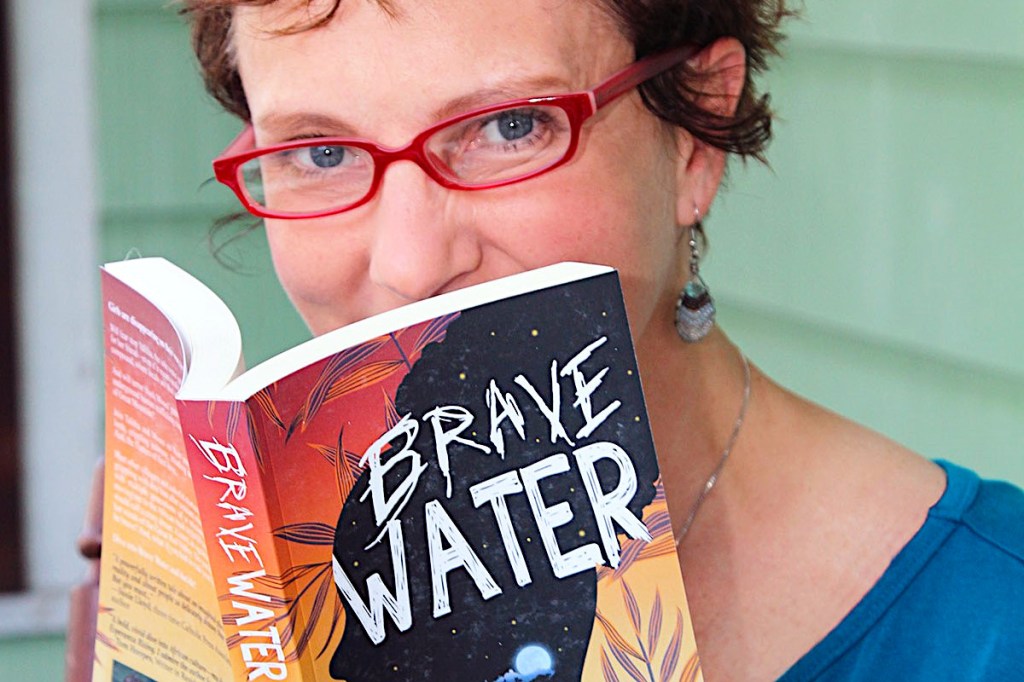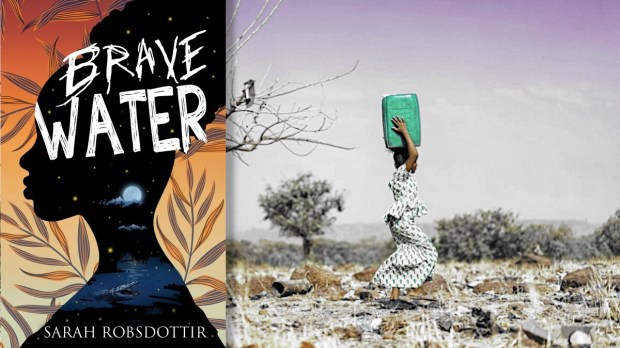Lenten Campaign 2025
This content is free of charge, as are all our articles.
Support us with a donation that is tax-deductible and enable us to continue to reach millions of readers.
Editor’s Note: Brave Water appeared on Aleteia’s 2023 Summer Book List for Teens. We asked the author, Sarah Robsdottir, to share with our readers a little about the process of writing the book and the real-life inspirations behind the story.
It all began when a flyer arrived in my mailbox. There was a bright-eyed east African girl on the cover. She carried a bucket on her head, and the flyer told the story of how she had walked many kilometers to collect her family’s drinking water that day. The flyer also described how an estimated 40+% of the sub-Saharan population is without easy access to clean drinking water, and that girls like her, whose day-to-day routines are well-known by human traffickers, are often kidnapped on the way to the spring — these teenagers risk their lives for a simple cup of water.
I held onto that flyer. It sat beside my kitchen sink for many months while I’d mindlessly let the water gush to clean up after dinner. “Talitha” — as that’s what I named her — would look up at me from the pamphlet as if she was trying to tell me something. (Talitha is a biblical name meaning “little girl,” and it seemed fitting for this small, malnourished teenager whose story was taking shape in my head.)

Talitha’s voice
Each night, Talitha would put me to shame with the bright smile she was wearing after walking many kilometers on bare feet, because I typically scowl while doing any sort of housework. Talitha would shake her head, tsking softly about the amount of water I was using for one load of dishes: “That’s how much my entire hut would use in a week!”
Her voice was in my head. I just had to write this book.
But I’m not from east Africa! I’d argue with myself. I’ve never even been to the continent!
The fear was real. Still, I felt it was a story that needed to be told. And how could I be certain if I didn’t write it, that someone with more cultural acumen would?
A research deep dive
So, I dove into researching everything I could find about water acquisition in developing nations and east Africa in general. I’d take my seven homeschooled sons to our local library and check out tall stacks of books on a variety of east African countries, studying the region’s geography, history, culture, religions, tribal customs and agriculture. I reached out to college professors, missionaries, nuns, priests and heads of non-profit organizations to conduct interviews.
I also did a lot of research on human trafficking, and what I learned was astounding: According to the United States Department of State, it is estimated that there are almost 25 million victims of human trafficking worldwide at any given time. It was shocking to discover that this practice of modern-day slavery includes male and female victims of all ages who are used not only for sex, but for free labor and even forced organ harvesting.
I learned that human trafficking exists in virtually every country all over the world: While there is more awareness about this crime against humanity in developing nations such as east African countries where child labor is prevalent, there are active human trafficking rings in European countries, as well as in the United States and Canada.
St. Bakhita’s inspiring example
Early in my research, I discovered St. Bakhita, the patron saint of Sudan and human trafficking victims. St. Bakhita’s story of being sold into slavery as a young child and being so traumatized that she forgot her native language touched me deeply. I read and re-read her biography, inspired by her unfailing trust in God. I sought St. Bakhita’s intercession for help in writing Brave Water and made a promise to myself that I’d give a significant portion of my proceeds from the book to charity.
Today, Brave Water‘s charitable mission is what I’m most excited about. A few months ago — about 10 years from the day that flyer arrived in the mail — I wrote a check representing 30% of my personal proceeds from Brave Water to Cross Catholic Outreach. It was a moment I’ll never forget. I grew misty-eyed while my seven sons who were the book’s first editorial directors cheered me on. They jumped up and down in the kitchen, toasting coffee mugs full of grape soda over the same countertop where the idea for the book was born.
Brave Water is available through Voyage Publishing and at Amazon.com. Keep up with Sarah and her family at www.sarahrobsdottir.com.

